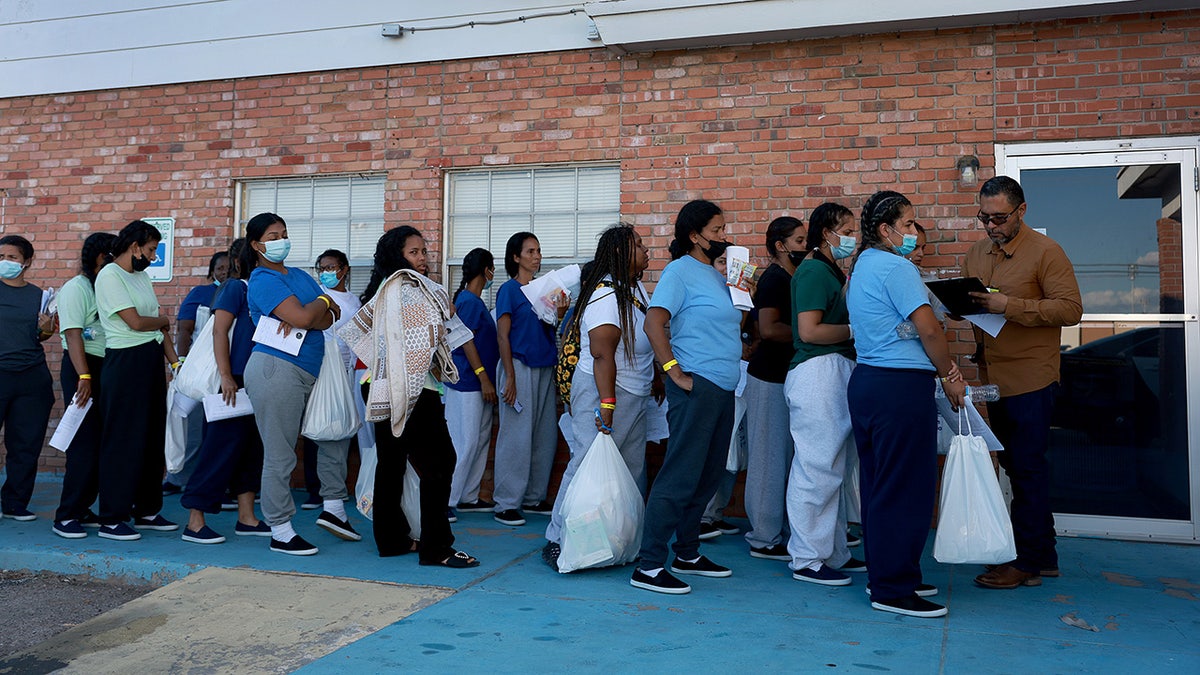DHS creating volunteer force to do chore for migrants, documents show
Fox News correspondent Gillian Turner provides exclusive insight on new developments in the crisis at the southern border on 'America Reports.'
Tens of thousands of illegal immigrants had their cases thrown out by immigration judges after documents were not filed in time by Department of Homeland Security officials, according to newly released data.
Data obtained and analyzed by the Transactional Records Access Clearinghouse (TRAC) at Syracuse University, found that 63,586 cases were dismissed in FY 2022 as of the end of September because officials, mainly Border Patrol agents, are not filing the Notice to Appear (NTA) in time.
Migrants who are apprehended by Border Patrol after entering the U.S. illegally in many cases are released into the U.S. with an NTA, which gives them a court date and address to appear for their immigration hearings. NTAs are typically submitted to the immigration court by Immigration and Customs Enforcement (ICE) using data from Customs and Border Protection (CBP).
With a massive surge of numbers at the southern border that began in the Spring of last year, the number of NTAs being given and migrants being released into the U.S. also surged, often overwhelming Border Patrol agents and officials. Agents were then given the authority to use a scheduling system that schedules the hearing at the court, while producing a copy to the migrant.
RECORD 856 MIGRANTS DIE AT SOUTHERN BORDER IN FISCAL YEAR 2022: CBP

Migrants who recently arrived from Venezuela after crossing from Mexico wait to be assigned a hotel room provided by the El Paso Office of Emergency Management on Sept. 21, 2022, in El Paso, Texas. (Photo by Joe Raedle/Getty Images)
TRAC, which obtained the numbers via a Freedom of Information Act (FOIA) request, found that numbers spiked from less than 1,000 incidents of no NTAs being filed in February and March 2021 to more than 5,000 a month in late 2021 and 2022. In April 2022, more than 7,000 cases were thrown out.
The research center says that the amount of cases being thrown out is not only wasteful of the court’s time, but also problematic for the immigrants involved — who may turn up for a court date only to have the case dismissed, and be left in limbo as to their status and what to do next.
Austin Kocher, research assistant professor at TRAC, said that on one hand he empathized with the agency due to the administrative burden it was facing with the increased numbers and increased processing. But he said the issue had arisen by allowing DHS officials to schedule the hearing in court when creating the NTA. That hearing could occur before the NTA has made it into the court system.
"The issue is, if you schedule a hearing three months out, and it takes longer than three months to actually file that NTA on the courts … then that immigrant is going to show up in court, and the judge isn't going to really have any record of that case. So essentially nothing can happen," he said.
EL PASO'S MIGRANT DATA DASHBOARD GIVES GLIMPSE INTO ONGOING MIGRANT SURGE
He said it was not unusual for NTAs to take time to get placed onto court systems, but what is different now is the scale.
"It's not as if it's entirely unprecedented, they have had issues in the past," he said. "It is unusual at the scale that this is happening and the regularity in which it's happening right now."
A DHS spokesperson told Fox News Digital that those who are released from custody are under strict requirements to report in regularly.
"If a Notice to Appear (NTA) is unavailable, insufficient, or in need of correction at the time of the immigration court hearing, it is a regular practice to correct the deficiency and resubmit, or issue a new NTA so that cases may resume and migrants can continue with their obligation to appear before an immigration court at a later date," they said.
DHS said that it has matched an "unprecedented challenge" with "unprecedented border security solutions" — including 23,000 more staff, greater investments and anti-smuggling efforts and regional cooperation.
CLICK HERE TO GET THE FOX NEWS APP
Meanwhile, DHS says ICE is working with CBP and USCIS to ensure NTA forms are properly completed to reduce any such incidents. Additionally, when migrants are released, they are told to check in with ICE, including reporting changes of address and to receive further information about their cases.
However, it still raises the risk of migrants getting lost in the system, given the complex U.S. immigration system and the large number of migrants being processed into the U.S.
"The one outcome we know is confusion, that's for sure," Kocher said. "And confusion within a system that is already this complicated is a bad thing."























